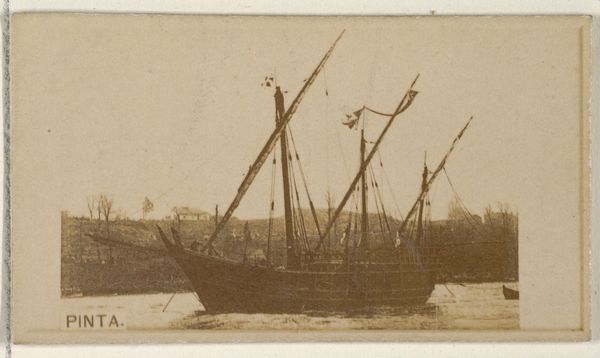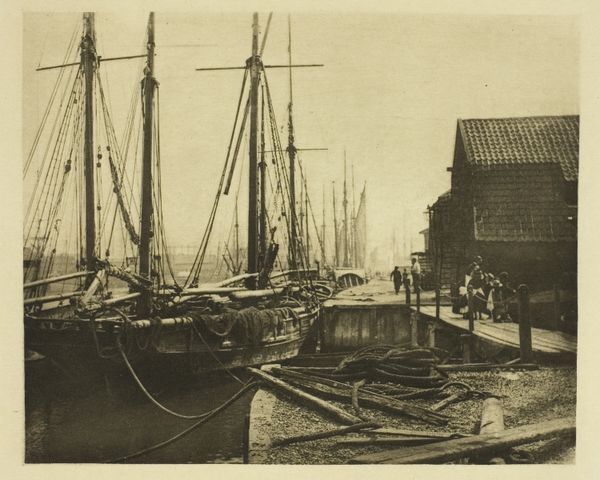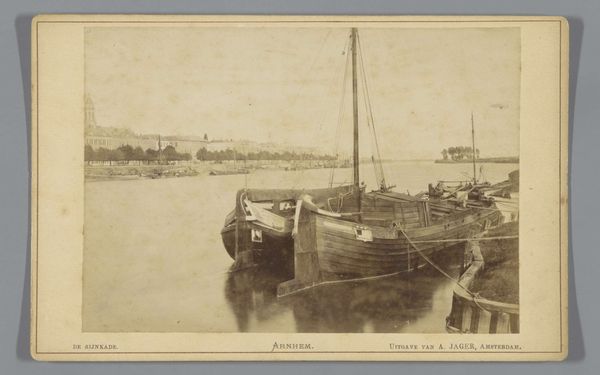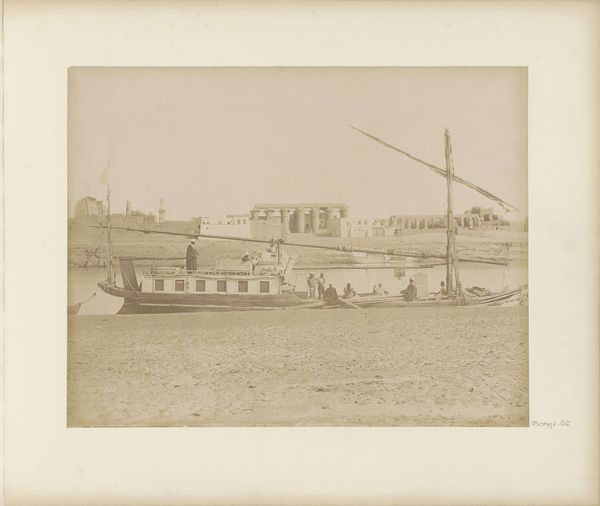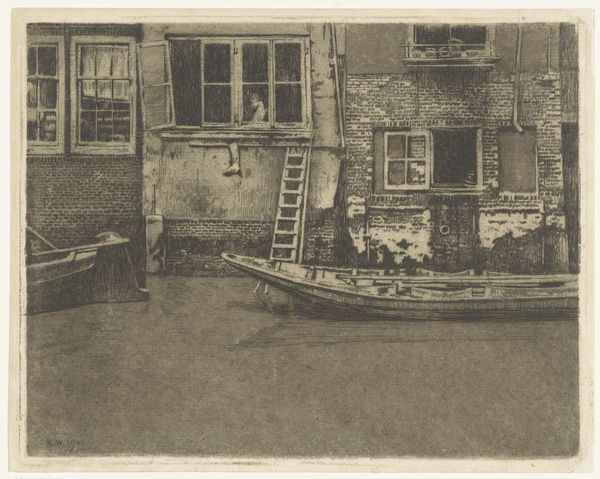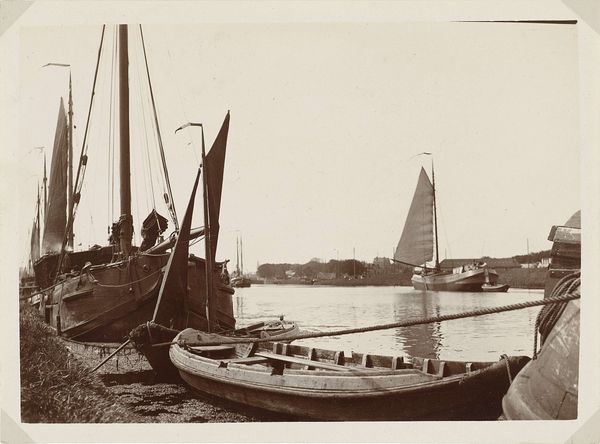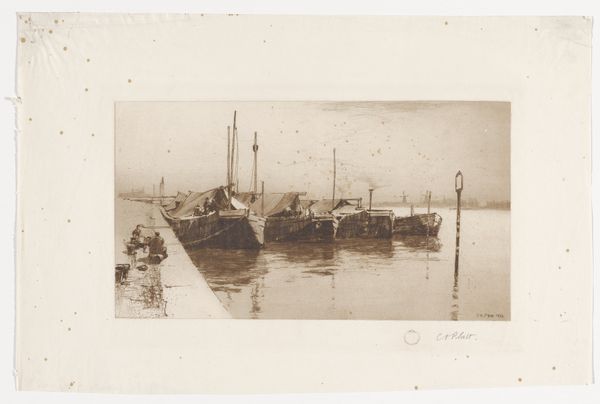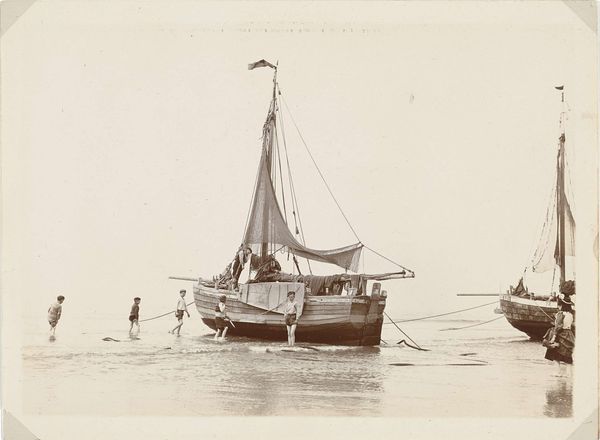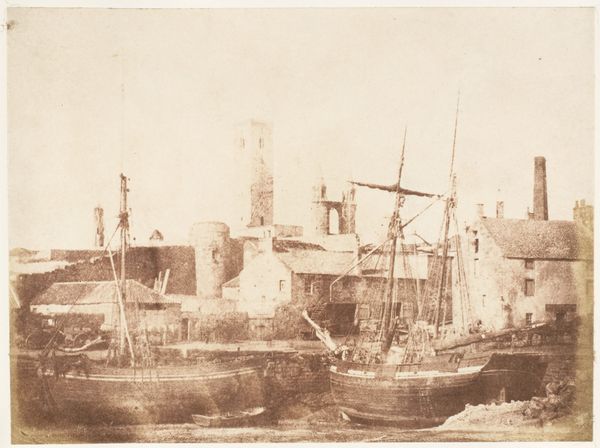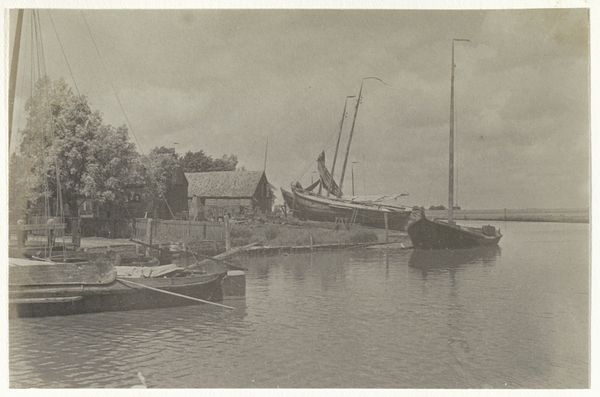
Copyright: Public Domain
Curator: Hill and Adamson’s “Newhaven,” taken between 1843 and 1847, captures a serene yet revealing scene. Editor: There’s a somber quality to this image. The boats, the stone building, even the boys have a weight to them. It speaks of a certain lived reality, doesn’t it? Curator: Absolutely. "Newhaven" invites us to consider 19th-century Scottish society and the realities of coastal communities, including the labour connected to fishing and port activity. Note the fishermen, for instance: their lives were deeply entwined with the rhythms of the sea. Consider the cultural significance, also, of a work that deliberately foregrounds their presence. Editor: I'm particularly drawn to the boats themselves. The rough texture of the wood, the construction evident in their frames. You can almost smell the salt and varnish. These boats weren't just objects, were they? Curator: They were vital tools, extensions of the fishermen’s hands, crucial for survival, but also symbols of independence within a tightly knit community. It invites questions of identity and self-representation during this period of industrialisation, when social roles and gendered expectations were being strongly defined. What does it mean to see them represented with such a grounded gaze? Editor: And the placement, arranged on the beach, as if they are taking a needed rest? The composition also highlights a human scale, doesn’t it? It creates a direct link to labour—making, repair, toil, profit—that is unavoidable. The relationship to both the human figures, the sea, and the architecture really centers material culture. Curator: A perspective easily overlooked. Editor: Ultimately, I am drawn to that emphasis and how they managed to create this sense of profound simplicity, documenting a reality in their present tense and asking us to really see that material and cultural dynamic, even in our own time. Curator: Seeing the subjects presented here gives us a crucial key into questions of how, even through the seemingly benign everyday, hierarchies get shaped.
Comments
No comments
Be the first to comment and join the conversation on the ultimate creative platform.

